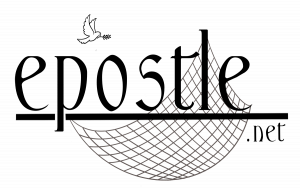
Lenten Journey Day 40 – Worship
What a beautiful day today is. It is day 40 – forty days ago we began this Lenten Journey. We feel a sense of accomplishment. It is a good feeling. It has been 40 days of fasting – abstaining from certain foods. It has been 40 days of intensifying our prayer life. It has been 40 days of charitable giving, not merely by writing out checks but giving pieces of ourselves. We have counted our blessings and our talents, contemplating our purpose and function within life and our world. It has been a time of reflection.
It is perfectly natural for us to look back today, perhaps even revisit some of the themes that we explored during this Season. In looking back, though, we must be honest. If not, we will be betrayed by our attitudes and actions.
Today as we gather on this 40th day of Lent we arrive as new creatures. We have been transformed. We have changed, perhaps not to the exact place we would like to be, but the change is noticeable. In particular we have a new outlook. We see ourselves differently, as individuals and within the structure of our communities and the world.
The one topic that follows, naturally is “Worship.” It is the one area that we have not explored. It is the most extraordinary and natural. It is the final step we need to take during this Lenten Season.
In worship we understand ourselves in relationship with God in a rather unique manner. Worship is not prayer . It is praise. Worship is not asking. Worship is giving. It is giving ourselves and humbling ourselves before that which is greater than ours self. And so, Worship is the final step in the Lenten period.
It has been a beautiful journey this year because we have grown, both individually and together. By listening, by talking, by sharing, by extending ourselves, that is, by Loving! Think of it for a moment. The Love that we share with others defines who we are in, for and around life itself. And we have a new definition today. We have a new lease on life today! We have opportunity to come face-to-face with this holy season, to look at the resurrection with new eyes. Our eyes are focusing beyond crucifixion and we see the empty tomb. We witness and become part of the Tomb.
Imagine that…. Sitting in the Tomb of Jesus. Imagine waking up after the torture of crucifixion. Imagine waking up after a burial. We can now share properly what we were intended to share from the very beginning – to become participants in the salvation process. It is not a question of being saved, but one of being a participant. And that is where worship grants us a perfect model.
Worship in the Armenian Church is participation. It is an act of participation. It is not witnessing, but throwing yourself into it holistically with all your senses. To visually see what is around you – the visual delights, the colors, the candles, the flowers. To smell the aroma of the flowers at the altar as well as the incense that takes our prayers to heaven. To be able to hear the beautiful tones and tonalities of the angels. Not saying I don’t understand so let the angels come to me, but rather asking, how can I fly with the angels. How can I participant? Our sense of touch is also important in the Worship services. We have to touch each another. We have to physically love one another. We have to kiss each other to say “You are important in my life just as I would like to be important in yours.” In that touching process we begin to understand what it means to put our feet in the shoes of others. In the shoes of our brothers and sisters, of our people, of others who are struggling. We place our feet in the shoes of others and we understand their difficulties. Perhaps the loss of a job? The loss of a loved one? Perhaps they have an inability to process the spirituality, to process the love that God has put in our heart. And so we reach out to one another physically.
Finally we appeal to our sense of taste. We participate by communicating, by communing with the Holy Eucharist, with the precious body and blood of Jesus Christ.
So we see that worship really is that final step in the Lenten Journey. It is a step that allows us to go beyond Lent, so that taking what we learned during these 40 days, we can apply it and make it a reality in our life, every single day and every single moment, in our relationships with one another, to draw on what we learned in the past, but not to stay there in the past, and to say that the life before me is so beautiful that I’m ready to walk. I am ready to take on the challenges. I am empowered by God. I have been given a new lease on life with Jesus Christ as my savior.
Jesus Christ. Love incarnate. I have been given a new lease on life through Jesus, through love.
We conclude with a meditation on John chapter 15, Jesus, the True Vine. Jesus says, “I am the vine; you are the branches. Whoever abides in me and I in him, he it is that bears much fruit, for apart from me you can do nothing. If anyone does not abide in me he is thrown away like a branch and withers; and the branches are gathered, thrown into the fire, and burned. If you abide in me, and my words abide in you, ask whatever you wish, and it will be done for you. By this my Father is glorified, that you bear much fruit and so prove to be my disciples.
“As the Father has loved me, so have I loved you. Abide in my love. If you keep my commandments, you will abide in my love, just as I have kept my Father’s commandments and abide in his love. These things I have spoken to you, that my joy may be in you, and that your joy may be full.
“This is my commandment, that you love one another as I have loved you. Greater love has no one than this, that someone lay down his life for his friends. You are my friends if you do what I command you.
Amen.
This concludes the Lenten Journey.
The daily messages continue tomorrow with the Holy Week series at
Epostle.net 

